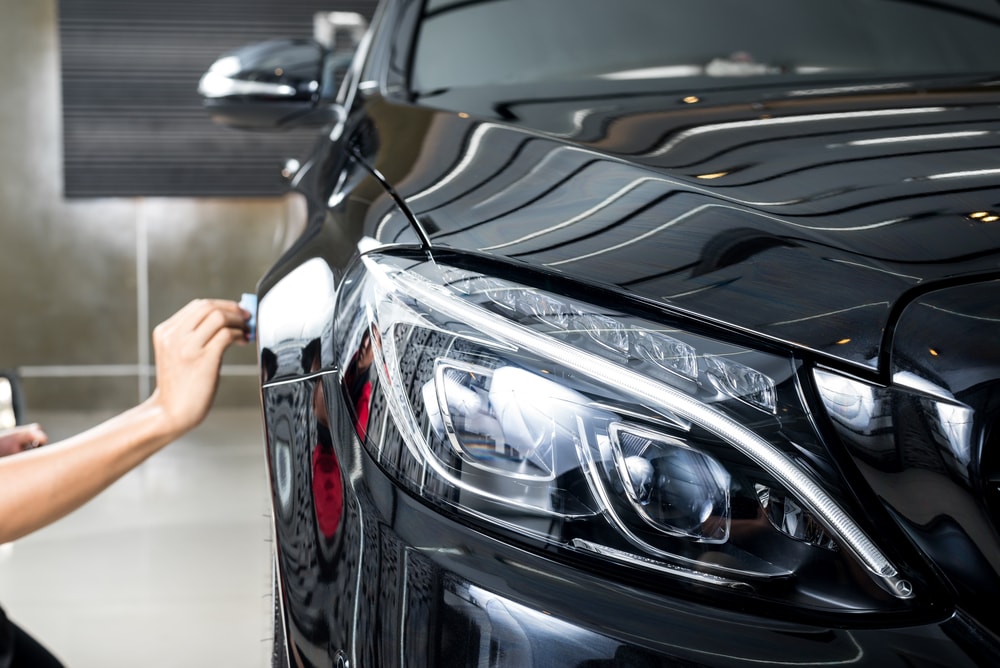The Power of Ceramic Pro: Extraordinary Finish for Ultimate Lorry Care
The Power of Ceramic Pro: Extraordinary Finish for Ultimate Lorry Care
Blog Article
The Science Behind Ceramic Layer: How It Enhances Your Automobile's Aesthetic and Durability

Comprehending Ceramic Finish Chemistry
The chemical structure of ceramic coverings plays a vital function in determining their durability and safety properties on lorry surfaces. Ceramic layers are normally composed of silicon dioxide (SiO2), which is a key part providing firmness and warm resistance. Various other components such as titanium dioxide, silicon carbide, and polysilazanes are often contributed to boost particular buildings like UV hydrophobicity, bond, and resistance.
Silicon dioxide, additionally called silica, forms a clear and strong layer on the vehicle surface area when applied appropriately. This layer functions as a shield, shielding the paint from ecological impurities, UV rays, oxidation, and chemical stains. Titanium dioxide aids in blocking hazardous UV rays that can cause paint fading and degeneration. Silicon carbide is recognized for its abrasion resistance, making the ceramic finishing hard and resilient against physical damage. Polysilazanes are used to boost the coating's flexibility and adhesion to the vehicle's surface, making sure durable protection. Recognizing the chemistry behind ceramic finishings is essential for both applicators and lorry owners to value the worth and benefits these finishes offer in keeping the aesthetic appeal and durability of lorries.
Boosted Gloss and Mirror-like Finish
Understanding the chemical structure of ceramic layers not just discloses their protective residential properties but likewise clarifies exactly how they contribute to attaining a boosted gloss and mirror-like coating on lorry surfaces. The trick to the glossy effect depends on the nano-ceramic fragments existing in the layer. These fragments complete microscopic pores and imperfections on the surface area, producing a smooth and level surface. As light hits the covered surface, it shows evenly, offering the appearance of a deep, glossy luster. Additionally, the chemical framework of ceramic finishes permits them to develop a strong bond with the vehicle's paintwork, preventing oxidation and maintaining the clarity of the finish over time. This bond likewise withstands ecological contaminants, such as dirt and grime, that can dull the shine of the lorry. The combination of loading residential or commercial properties, light reflection, and resilient defense makes ceramic coatings a prominent choice for those looking for a mirror-like and vibrant finish for their vehicles.

Effect on Paint Protection and Longevity
Ceramic finishings for automobiles substantially improve the long life and defense of the paintwork. By developing a chemically resistant layer on top of the vehicle's clear coat, ceramic coverings act as an obstacle against various environmental impurities that can damage the paint over time.
In terms of long life, ceramic coatings provide a long lasting solution compared to typical waxes or sealants. In general, the protective residential properties of ceramic coatings add substantially to maintaining the lorry's paintwork and boosting its aesthetic appeal over an extensive period.
Resistance to Contaminants and Harsh Elements
With the safety shield offered by ceramic layers against different environmental pollutants and elements, automobiles are able to preserve their excellent appearance in spite of exposure to rough conditions. Ceramic coverings develop a solid obstacle that wards off water, dust, dirt, and other typical contaminants, avoiding them from bonding to the automobile's surface. This hydrophobic nature not only makes cleansing much easier yet additionally lowers the danger of water places and etching triggered by acidic impurities. Additionally, the chemical resistance of ceramic finishes assists protect the paint from bird droppings, insect splatter, tree sap, and various other destructive substances that can harm the coating gradually.
Furthermore, ceramic finishings use UV security, protecting the lorry's paint from the sun's hazardous useful link rays that can create fading and oxidation. This resistance to UV damages aids keep the color strength and sparkle of the paint for longer periods. By creating a long lasting and resilient barrier, ceramic finishings guarantee that the automobile's outside remains secured versus a vast range of contaminants and rough elements, protecting its aesthetic allure and sturdiness.
Application Strategies and Maintenance Tips
For optimum results when using ceramic finishings to cars, using correct strategies and adhering to recommended maintenance techniques are crucial. The application procedure of ceramic finishing needs focus to information and precision. Prior to applying the ceramic covering, it is important to extensively clean and sanitize the lorry's surface area to guarantee correct bond. This entails washing, claying, and perhaps brightening the paint to create a smooth canvas for the ceramic finishing to bond properly.
When applying the ceramic finish, it is suggested to work in small click to find out more sections to guarantee even insurance coverage and to avoid the item from drying too promptly. Making use of applicator pads or microfiber cloths, apply the layer in a crisscross or up-and-down movement, relying on the item's directions. After the covering is applied, permit it to heal for the specified time before rubbing off any deposit.
In terms of upkeep, normal cleaning with pH-neutral soaps and staying clear of unpleasant tools or severe chemicals will certainly assist protect the ceramic covering's stability. Regular examinations for any damages or endure the covering can also help keep its safety homes in time.

Final Thought
In conclusion, top article ceramic coating improves a lorry's visual appeal and longevity with its chemical structure, supplying a glossy coating and safeguarding the paint from environmental impurities. Its resistance to severe aspects and simplicity of maintenance make it a popular choice for car proprietors seeking to preserve the appearance of their vehicles. Overall, ceramic covering is a medically backed solution for maintaining the appearance and longevity of your automobile.
Understanding the chemistry behind ceramic layers is important for both applicators and car owners to appreciate the worth and benefits these layers offer in preserving the aesthetic appeal and durability of cars. (ceramic pro)
Recognizing the chemical structure of ceramic coverings not just reveals their protective properties however additionally sheds light on just how they add to attaining an improved gloss and mirror-like coating on lorry surface areas. By developing a chemically resistant layer on top of the lorry's clear layer, ceramic coverings act as an obstacle against numerous ecological impurities that can damage the paint over time. Generally, the protective properties of ceramic finishings add significantly to maintaining the car's paintwork and boosting its aesthetic appeal over an extensive period.
In verdict, ceramic finish boosts a car's visual appeal and longevity through its chemical structure, supplying a shiny coating and shielding the paint from environmental impurities.
Report this page